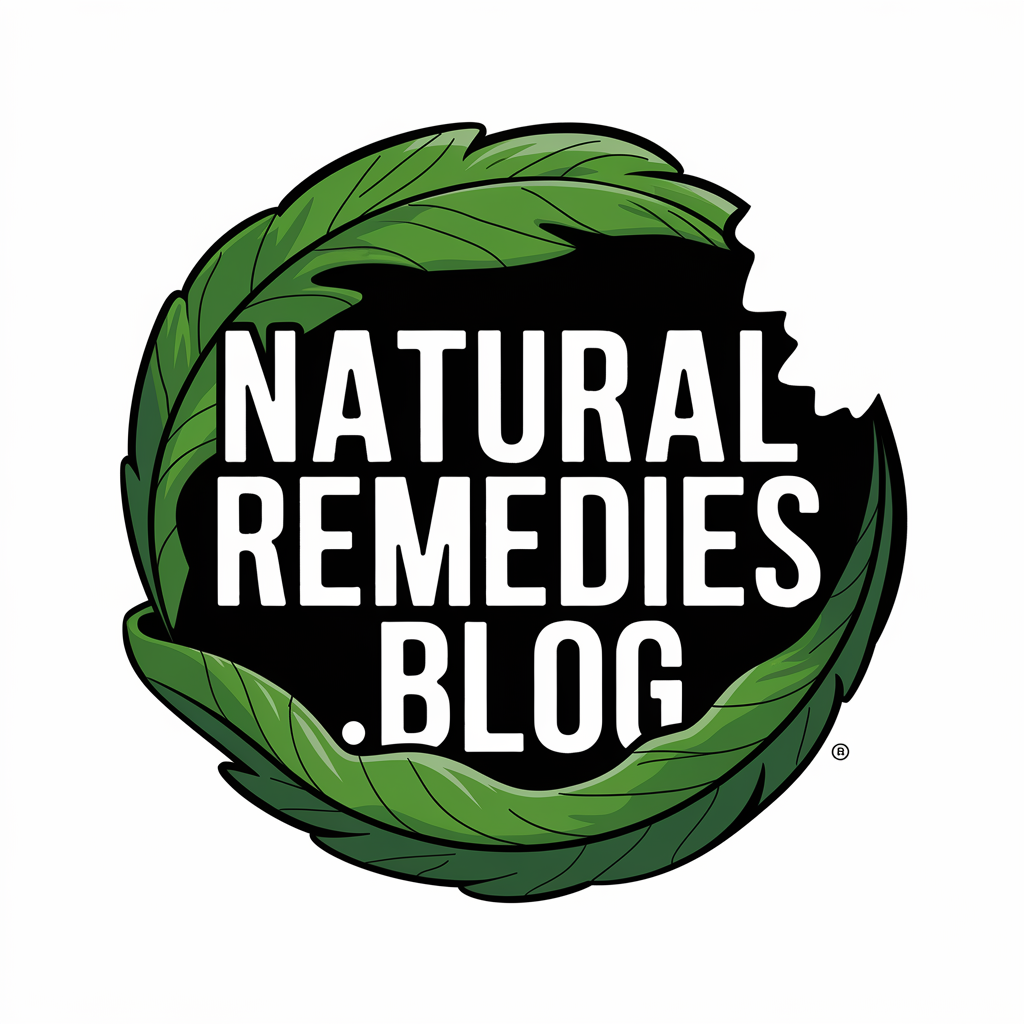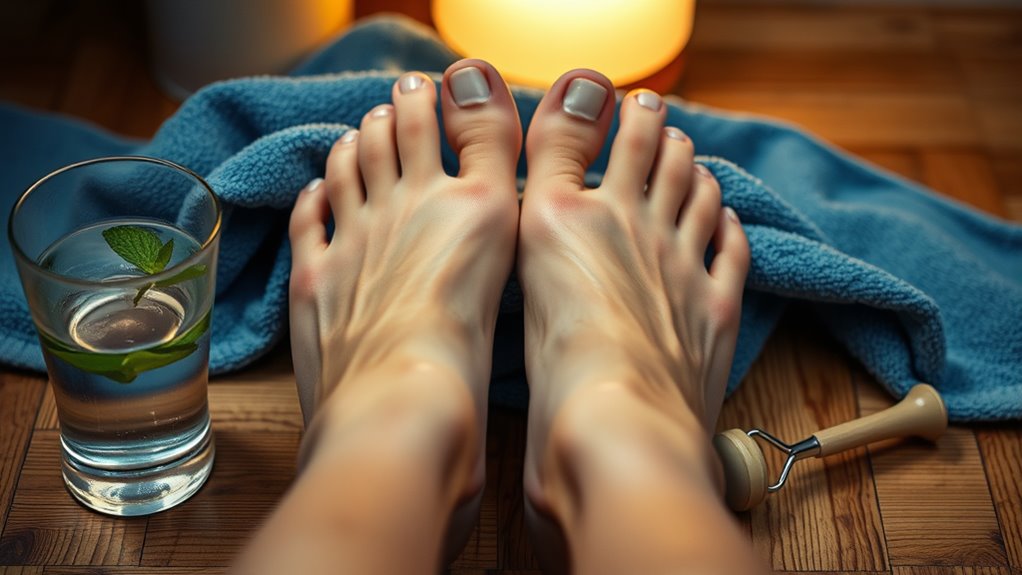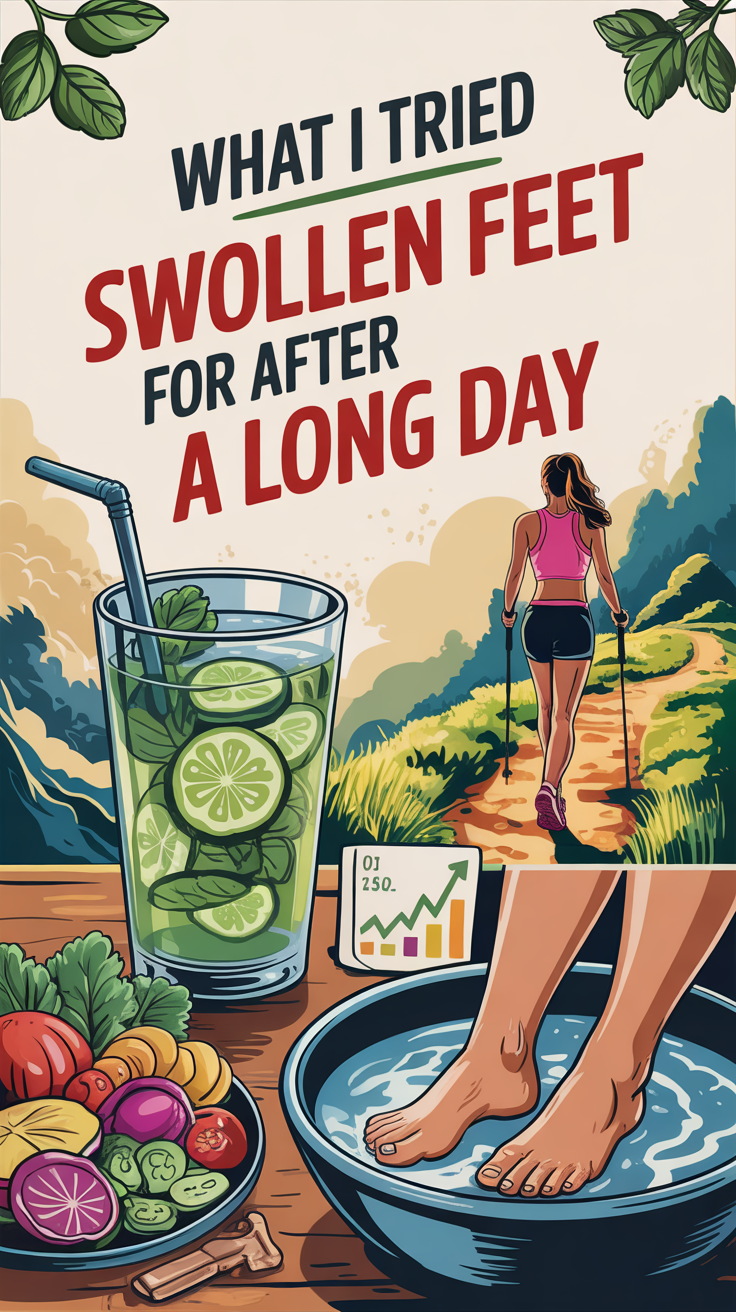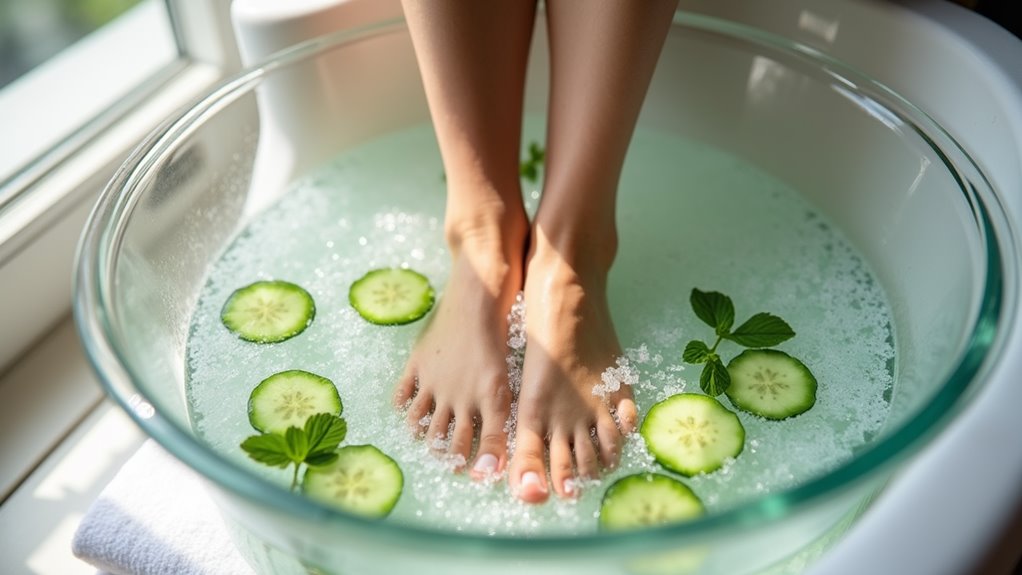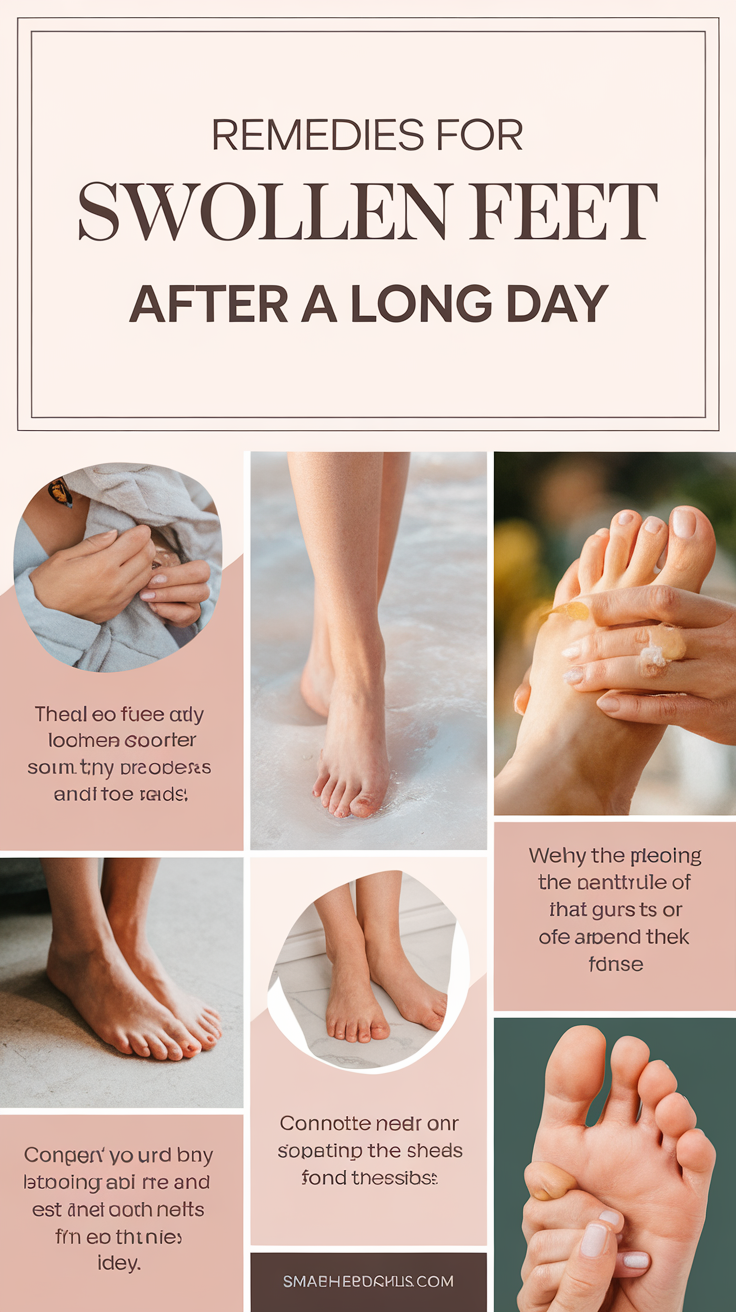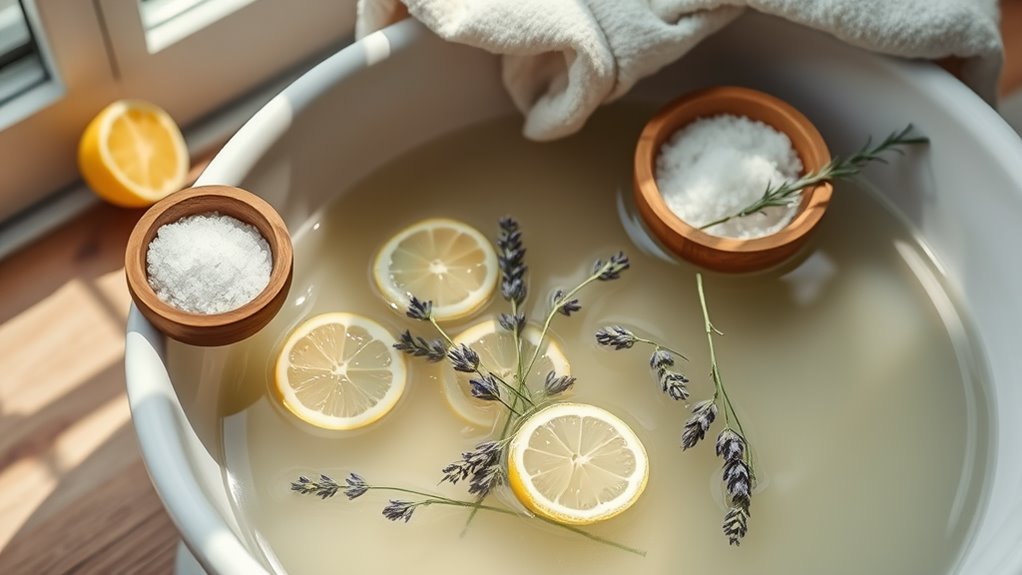What I Tried for Swollen Feet After a Long Day
After a long day, you might notice your feet swelling, but there are effective remedies to ease the discomfort. Elevating your legs above heart level can help reduce swelling, along with gentle exercises like ankle pumps. Staying hydrated is essential, too—drink plenty of water! I also found that applying a cold compress can quickly relieve inflammation. If you’re on medication, check for side effects that could worsen the swelling. There’s more you can explore to soothe your tired feet!
Understanding the Causes of My Swollen Feet
Have you ever wondered why your feet swell up unexpectedly? It could be due to several factors.
Prolonged standing or sitting, excessive salt intake, or being overweight can all contribute to swelling. Oedema caused by taking certain medicines can also be culprits. Conditions like venous insufficiency or injuries can also be culprits. Additionally, certain medications may cause fluid retention, exacerbating the issue.
If you’re pregnant, fluid retention is common too. Aging affects circulation, making swelling more likely.
To tackle this, consider swollen feet remedies like reducing sodium in your diet or opting for regular movement. Staying active and monitoring your health can help prevent those uncomfortable moments and keep your feet feeling great!
The Power of Elevation
Elevating your legs can be a game-changer when it comes to relieving swollen feet. By propping them up, you enhance blood flow, preventing that uncomfortable pooling sensation. This simple shift reduces swelling and alleviates pressure built from a long day of standing or sitting. Plus, it encourages relaxation—what a bonus! For best results, find a comfy spot and use pillows to raise your legs above heart level for 15 to 20 minutes, several times a day. Elevating legs improves blood flow and supports your circulatory system, making this practice even more beneficial. Additionally, it is important to stay hydrated as proper hydration can also help manage swelling effectively. Listen to your body, and if it feels good, make it a cozy part of your self-care routine!
Gentle Exercises I Tried
After struggling with swollen feet, I decided to try some gentle exercises, and they’ve made a noticeable difference.
Ankle pumps were a game-changer; flexing my feet up and down really improved circulation. In addition to these exercises, I found that incorporating elevation strategies helped further reduce swelling by promoting fluid drainage. Walking and doing mini squats helped too, boosting blood flow and reducing fluid buildup. I also loved doing ankle circles and toe lifts while seated; they were simple yet effective. Calf raises, both standing and seated, strengthened my legs and kept things moving.
Lastly, leg extensions and glute squeezes added variety while helping with blood flow. These exercises fit easily into my day and truly made a difference! It’s important to remember that consultation with a GP or medical professional is essential before starting any exercise regimen, especially for the elderly.
Staying Hydrated
Staying hydrated is key to managing swollen feet, as it helps maintain fluid balance in your body. Along with drinking plenty of water, incorporating hydrating foods like fruits and vegetables can make a real difference. Proper hydration also prevents fluid retention, which can contribute to swelling, especially in the lower limbs. This is particularly important because edema can arise from poor circulation and prolonged standing.
Importance of Water Intake
How can something as simple as water significantly impact swelling in your feet?
Staying well-hydrated flushes out excess sodium and toxins that contribute to fluid retention. When you’re dehydrated, your body clings to water, worsening that uncomfortable puffiness. By drinking about 1.5 to 2 liters daily, you can support better blood circulation and improve fluid balance in your tissues. It’s best to sip small amounts throughout the day, especially during long periods of travel or inactivity. Additionally, it’s essential to limit sodium intake to prevent water retention, as high salt consumption can exacerbate swelling.
Foods for Hydration
When it comes to managing swelling in your feet, incorporating hydrating foods into your diet can make a big difference.
Foods like cucumbers and watermelon are packed with water and help flush out excess fluids.
Leafy greens and tomatoes act as natural diuretics, reducing puffiness effectively.
Don’t forget about omega-3-rich fish and berries, which fight inflammation while providing hydration.
Include potassium-rich foods like sweet potatoes and lentils to maintain fluid balance.
To stay refreshed, coconut water can replenish electrolytes.
The Benefits of a Cold Compress
Using a cold compress can be a game changer when dealing with swollen feet. It not only offers immediate pain relief but also helps reduce inflammation quickly, allowing you to feel more comfortable in no time. Plus, by enhancing blood circulation, it supports your feet in recovering and getting back to their normal state. Additionally, this method can be especially beneficial for those experiencing fluid accumulation in tissues due to common causes such as prolonged standing or sitting.
Reducing Inflammation Quickly
Have you ever wondered how quickly you can relieve swelling and discomfort in your feet? A cold compress can be your best friend. It works by constricting blood vessels, limiting fluid leakage, and numbing pain. For effective use, consider these application guidelines:
| Application Tips | Benefits |
|---|---|
| 15-20 minutes per session | Reduces swelling quickly |
| Use a cloth barrier | Prevents skin damage |
| Repeat several times a day | Enhances healing process |
Immediate Pain Relief
Relief from swelling in your feet often comes hand in hand with managing pain, and a cold compress can provide both.
By applying a cold compress, you’ll not only numb the discomfort but also effectively reduce inflammation.
This non-invasive option doesn’t require medication, making it a great choice, especially after a long day.
It’s so easy to use—you can whip up a homemade ice pack or grab a gel pack on the go.
Plus, it’s affordable!
Just remember to use a cloth barrier and limit applications to 15-20 minutes to avoid any skin issues.
Your feet will thank you!
Enhancing Blood Circulation
How can you boost blood circulation while managing swelling in your feet?
A cold compress can do wonders!
When applied, it first constricts blood vessels, then increases blood flow as it warms.
Here’s how to incorporate it:
- Wrap ice packs in a towel for safety.
- Apply for 15-20 minutes multiple times daily.
- Combine with a gentle massage to further stimulate circulation.
- Elevate your feet while you relax to enhance the effects.
Making Dietary Changes
Making dietary changes can significantly improve your experience with swollen feet. A balanced diet can help ease inflammation and promote better hydration. Here’s a handy guide to what to include and avoid:
| Foods to Include | Nutrients Benefits | Foods to Avoid |
|---|---|---|
| Watermelon & Cucumbers | Hydration | Processed Foods |
| Bananas & Sweet Potatoes | Potassium | High Sugar Foods |
| Berries & Leafy Greens | Antioxidants | Saturated Fats |
| Fatty Fish | Omega-3 Fatty Acids | Excessive Salt |
In addition to dietary changes, focusing on maintaining healthy circulation will further aid in reducing swelling. Focus on nutrient-rich foods, and you’ll likely notice a difference!
Monitoring My Medications
Are you aware of how your medications might be affecting your feet?
It’s crucial to keep an eye on what you’re taking, as some common medications can contribute to swelling.
Here are a few to consider:
- Calcium Channel Blockers: They can cause fluid leakage, leading to swelling.
- Steroids: Known for sodium retention, which increases swelling.
- Hormone Medications: Contraceptives may result in water retention.
- Beta Blockers: Often linked to fluid retention and edema.
Monitoring these effects can be the first step toward alleviating discomfort and ensuring your feet feel their best. Additionally, certain allergy medications may also cause swelling as a side effect, so it’s important to review all medications for potential impacts on your condition.
Seeking Professional Help
When faced with swollen feet, you might wonder when it’s time to seek professional help.
If your swelling persists or worsens, it’s essential to consult a healthcare provider, especially if accompanied by symptoms like chest pain or shortness of breath.
Remember, conditions like heart or liver disease could be at play.
A podiatrist can offer specialized care, while your GP can assess your overall health.
Keeping a log of your symptoms helps in diagnosis.
Don’t hesitate to visit urgent care for immediate concerns.
Your feet deserve attention, and professional evaluation could lead to effective treatment and relief. Regular Listerine foot soaks may also help alleviate discomfort while you seek medical advice.
